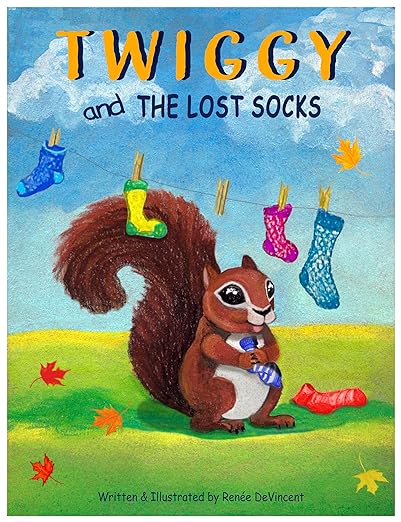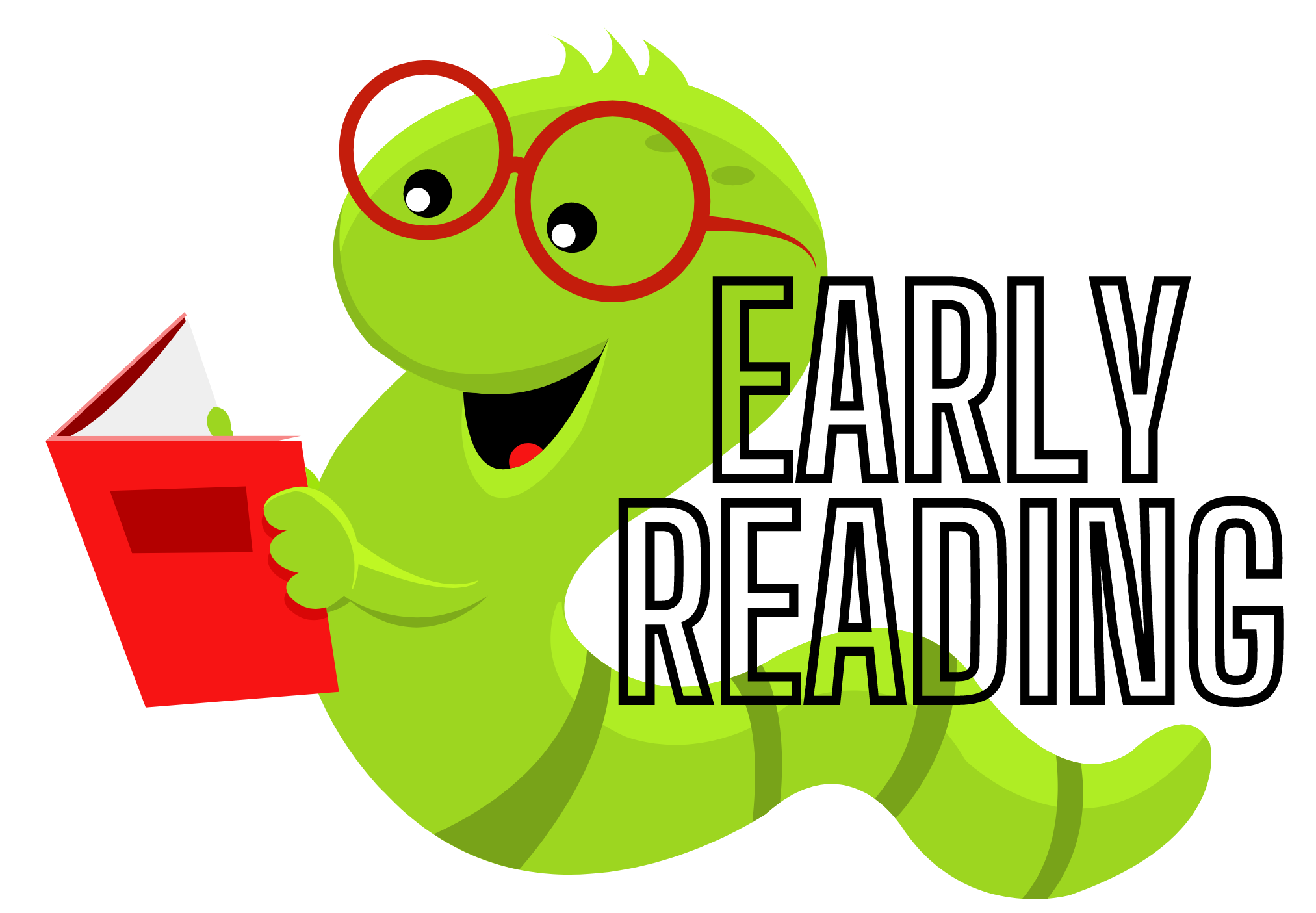In this interview, we’ve asked debut author Renée DeVincent about her colorful illustrations and rhythmic prose that bring her tale Twiggy and the Lost Socks to life. Renée shares her intentional approach to color selection, aiming to create an immersive and emotionally resonant experience for young readers. From the deliberate use of vibrant hues to evoke joy and excitement, to the incorporation of muted tones for moments of reflection.
Renée also shares the challenges faced in the process of writing and illustrating her debut book. Exploration and imagination, crucial elements in children’s literature, are underscored by Renée, who emphasizes their role in fostering creativity, problem-solving, and improving motor skills. Her background in graphic design, Renée’s illustrations merge diverse influences to create captivating visuals that set the tone and mood for her books. Join us in this interview as we explore the artistry, creativity, and meaningful storytelling that define Renée DeVincent’s style as an author.
Color plays a significant role in children’s books. How do you choose and use colors to create a mood or evoke emotions that resonate with young readers?
In my children’s picture books, color selection is intentional, aiming to create an immersive and emotionally resonant experience for young readers. I prioritize contrast for clarity, ensuring a focused visual experience. Colors are chosen to evoke specific emotions, using vibrant hues for joy and excitement and muted tones for reflection. For instance, lively colors accompany adventurous scenes, while subdued tones enhance moments of empathy. This deliberate use of color aims to establish a visual language that deeply connects young readers with the narrative, enriching their overall engagement with the story.
The theme seems both imaginative and relatable. How did you infuse this theme into your illustrations, and what do you hope young readers take away from it?
The theme resonates universally, making it relatable, even for the youngest readers who may have experienced the frustration of a missing sock. In Twiggy and the Lost Socks the illustrations play a pivotal role in bringing this theme to life. Most of the spreads incorporate a sock, a central element in the plot, to evoke the emotions tied to losing, finding, and sharing socks. By weaving the sock into various scenes, the illustrations enhance the narrative and spark young imaginations to consider the whimsical possibilities of where a lost sock might end up.
Through these visuals, I hope young readers not only enjoy the playful journey of Twiggy and the sock but also take away a sense of creativity and compassion. The story encourages imaginative thinking while imparting the values of empathy and sharing. Ultimately, I aspire for the illustrations to leave a lasting impression on young minds, turning the simple concept of a lost sock into a delightful and thought-provoking adventure.
Do you have a specific audience in mind when creating these illustrations, and if so, how do you adapt your visuals to cater to their age group or understanding?
I have a broad audience in mind when crafting illustrations for my children’s picture books. The intended readers are primarily younger children who may not be reading independently yet. However, considering that educators, caregivers, delayed readers, and older kids who enjoy picture books are also part of the audience, I aim to create visuals that resonate across this diverse spectrum.
The challenge lies in creating illustrations that appeal to a wide age range. I recognize that, even without the accompanying words, art has the power to be appreciated at any age. Hence, I focus on crafting colorful and beautiful illustrations that stand alone as captivating visuals. This approach ensures that whether it’s a caregiver reading to a toddler or an older child exploring the book independently, the illustrations provide an enriching and visually appealing experience for all.
Could you elaborate on the process of collaboration between the writer and the illustrator? How did you work together to ensure the visuals aligned with the cheerful and rhyming narrative?
Illustrations play a pivotal role in children’s books. In some respects, they are as important as the words themselves. The perfect synergy between words and images brings a story to life in a way that resonates deeply with young readers. For the Twiggy and the Losts Socks project, I was uniquely positioned to be both a writer and an illustrator. However, when I collaborate with other illustrators on projects, I’m already well-versed in their world, and this familiarity eases the collaborative process.
In my collaborations, I greatly value the talents and creativity of the illustrator, and I make it a point to provide them with the space and creative freedom to bring their unique vision to the table. While stepping back and allowing the illustrator to shine can be challenging, I approach it with mindfulness and a collaborative spirit. This collaborative approach often yields the best solutions, as it brings together the strengths of both the writer and the artist, resulting in a visually captivating and emotionally engaging experience for young readers.
What challenges did you face, if any, in creating these colorful illustrations for? How did you overcome them?
Creating colorful illustrations for Twiggy and the Lost Socks presented challenges, primarily when deciding which parts of the narrative to depict and emphasize on a particular page or spread. The illustrations needed to enhance the narrative without distracting from it, so making the right choices was crucial.
One approach to overcoming these challenges was to seek feedback from the target audience, especially children. Their input is invaluable, as they offer a fresh perspective on which illustrations resonate most with them. This helps ensure that the visuals align with the intended impact of the story and cater to the young readers’ preferences.
Additionally, collaborating with fellow illustrators and colleagues in the industry was another helpful strategy. Their insights and experience can provide valuable feedback and alternative viewpoints. This collaborative process allows for a more well-rounded assessment of the illustrations. It helps make informed decisions on visually bringing the narrative to life.
Your illustrations seem to encourage exploration and imagination. How important do you think these elements are in children’s literature, especially concerning the visual aspects?
Exploration and imagination are important in children’s literature, especially in relation to the visual aspects. Illustrations are crucial in this process, providing a tangible and engaging way for young readers to explore and imagine. Visual elements bring stories to life, allowing young children to vividly experience new worlds and ideas, ultimately enriching their understanding of the world around them. Exploration and imagination are essential for children because they can foster creativity and problem-solving and improve their motor skills.
Are there particular art styles or artists that influence or inspire your colorful illustrations for children’s books?
My colorful illustrations for childrens books are a product of various artistic influences shaping my visual approach. I draw inspiration from the vibrant color and form of Georgia O’Keeffe, the whimsical creativity of Maurice Sendak, the contemporary flair of artist Jill Charuk, and the timeless elegance of American Modernism and impressionistic art. Additionally, my 17-year journey as a graphic designer significantly impacts my work, particularly in applying color theory. These diverse influences converge, guided by my background in graphic design, to create illustrations that not only engage but also set the tone and mood for my books.
What do you hope parents, teachers, and young readers take away from the combination of these bright illustrations and the cheerful, rhyming story in your book?
First and foremost, my primary goal with is to thoroughly entertain young readers. The combination of bright illustrations and the cheerful, rhyming story aims to create an engaging and enjoyable reading experience that captivates their imagination.
Beyond entertainment, I hope parents, teachers, and young readers take away valuable lessons about kindness and empathy. The story serves as a reflection on how small acts of kindness can profoundly impact others. By weaving these themes into the narrative, I aspire to spark discussions about the importance of compassion and how everyone has the power to positively influence their environment.
Moreover, I want readers to understand that life extends beyond individual experiences and that we can positively impact the world around us. The vibrant illustrations and the rhyming story serve as a gateway to exploring these broader concepts, encouraging young minds to consider their roles in creating a positive and empathetic community.
Can you share any anecdotes or feedback you’ve received from readers regarding the impact of the vibrant illustrations in Twiggy and the Lost Socks?
Reader feedback often highlights the vibrant illustrations with the colorful cover setting an immediate tone for the adventure. A memorable review that stands out echoes this sentiment, emphasizing the profound impact of the illustrations on readers. The reviewer expressed, “Thoroughly enjoyed reading this children’s book. The beautifully illustrated pages were inspirational and gave insight into the message of self-awareness and character in a manner that was easy for children to understand.”
This feedback underscores the power of the visuals in conveying not just the narrative but also key messages about self-awareness and character development. It reaffirms that the colorful illustrations serve as a visual catalyst, enhancing the reading experience and making complex themes accessible to young minds.
Lastly, what future projects or themes can readers expect from your work that continue to emphasize great character development through art and rhyme?
I’m thrilled to share that there are several exciting projects on the horizon for my readers. Firstly, I’m crafting a spin-off book from Twiggy and the Lost Socks, which promises to deliver more enchanting adventures and heartwarming moments.
Additionally, based on valuable feedback I’ve received about Twiggy and the Lost Socks, I’ve decided to create a middle-grade version of the book. It’s been well-received by older kids. They really understand the message, and adapting some of the concepts into a middle-grade format is something that I am looking forward to sharing.
Find the author
Twiggy and the Lost Socks
 Colorful illustrations and cheerful rhyming, this engaging story will leave both kids and adults feeling uplifted and connected.
Colorful illustrations and cheerful rhyming, this engaging story will leave both kids and adults feeling uplifted and connected.
This heartwarming tale follows the adventures of a young squirrel and his family. One day, Twiggy finds something soft and fuzzy. A treasure that will keep him warm during the winter. Unknown to him, it belongs to a girl who is searching for her lost sock.
What will happen when the girl discovers Twiggy has her sock? Will Twiggy get to keep the sock? Follow along as Twiggy navigates the complex emotions that come with meeting new people and having unexpected experiences. Cheer Twiggy along as he learns, with the support of his Mama, essential lessons about judging others.




